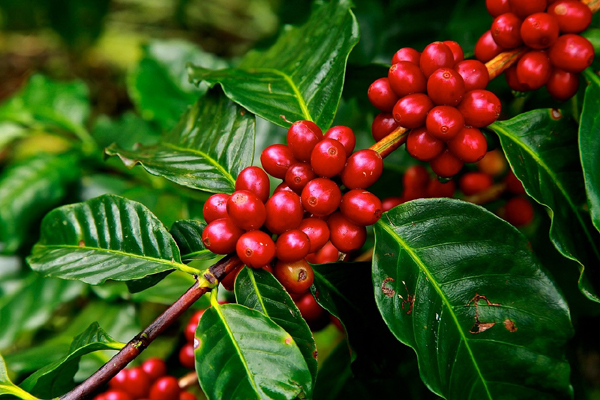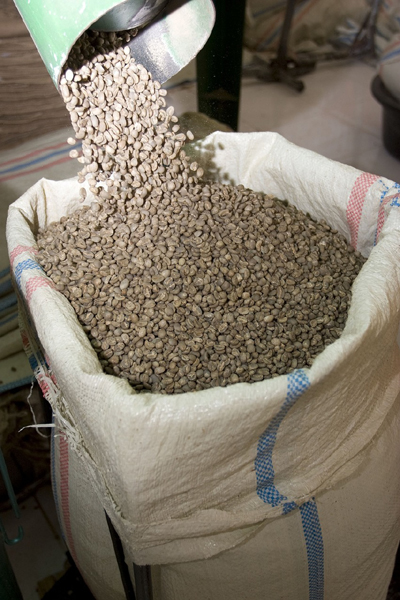JOURNEY OF A FAIR TRADE BEAN
Recent figures from the British Coffee Association (BSA) reveal that the UK’s coffee consumption has increased from 70 million cups a day 10 years ago, to 95 million cups a day in 2018.
But before they end up in our cups, coffee beans undertake a long journey. They travel up and down mountains, through valleys, and over dangerous rope bridges – all before they are even processed.
You may think that that the fair trade coffee bean goes through the same process as a regular one, but, in fact, it couldn’t be more different. Although, the journey differs depending on the grower and the farm —as well the processing unit.
It’s not just the ethics, offer of training and education, fair wages, and dedication to treating seasonal workers fairly that set fair trade farms and huge plantations apart. From the number of harvesters to the way farmers re-use their waste water – the fair trade coffee bean production process is eco-friendly, in tune with the earth, and makes the most of farming methods that have been used for hundreds of years.
With over 140 memberships, CIPAC is one honey and coffee co-operative in Guatemala. The climate is tremendous for coffee growth and coffee farmers have inherited their coffee plants from family members, and practise skills passed down throughout the generations.
Let’s follow some of CIPAC’s fair trade coffee growers to find out what comes before the distribution of our much-loved coffee …

Start with harvesting
When it comes to harvesting coffee cherries, farmers tend to do so from the end of December to the end of February. On family-owned farms, it’s not unusual for the whole family to get involved.
There’s a lot of factors that contribute to when coffee is finally ripe — including the climate, altitude and soil type. Some farmers even live in areas with their own microclimate, which means the coffee they produce has its own particular quality and flavour.
Believe it or not, coffee cherries may be harvested more than once from the same plant. This is because only the ripe cherries are hand-plucked from the bush to guarantee a high quality coffee. On large coffee farms, the harvesters must travel up steep hills and down into valleys to collect the cherries in a basket — which can be exhausting.
Beginning to de-pulp
The cherries need to be de-pulped within 24 hours, and the harvesters often have to travel up and down hills and across rickety bridges to reach the end destination.
Unlike many coffee plantations, CIPAC farmers either use electric de-pulping machines or their own energy as opposed to sophisticated machinery. The coffee beans are closely inspected as they’re poured into the machine, and any beans that don’t look quite ripe enough or are too ripe are taken out.
Washing the cherries
To remove the remaining wet layer of the coffee bean, cherries are washed in special coffee water pools for an entire day. Some beans will float in the water and these beans are always removed.
As the water then contains unwanted elements, it must be removed carefully. Farmers re-use the dirty water and skins to make an eco-friendly compost to use around their coffee plants!
 Drying the beans
Drying the beans
Once they have been washed, they must dry naturally in the sun. The farmer chooses an area that’s wide, flat, and clean, and spreads the beans out with a rake. They turn the beans with this rake while the sun shines, and then hurry to cover them with a huge sheet if there’s a hint of rain or moisture about. They also cover the beans every night, to keep off the dew.
Moving the beans
A van sent by the coffee co-operative picks up sacks of beans at the nearest road to the farm. Farmers in the most remote areas must make their way along dangerous winding mountain paths and encounter huge cliff drops. Can you imagine having to walk along a cliff-edge while carrying a 30kg bag of coffee beans?
For farmers who aren’t selling to a co-operative, an even longer journey may have to be taken to reach a trader. Once the beans reach the co-operative storage site safely, they’re weighed, checked for quality, and stored.
Bean quality
Once the beans have been delivered, the co-operative will organise the beans efficiently. This is the most important quality milestone yet, and involves the beans being judged by their weight and appearance, to make sure they’re of the best quality. Finally, the beans are ‘polished’, which removes the last layer of skin covering the coffee beans.
As well as this, buyers often have the option to assess the quality. ‘Coffee cupping’ involves a buyer slurping coffee in an attempt to accurately taste all the subtle flavours of the coffee, especially for the special varieties grown in areas with their own microclimates. These samples are sent to the co-operative, so they can easily vouch for the quality of the coffee to buyers.
 The beans will then be sold to an exporter. With CIPAC, the coffee beans are sold to a fair trade operator in Mexico called Cafesca. From there, some of the beans are sent to another Mexican fair trade operator, Descamex, which has the only facility in the world to use the Mountain Water Method to produce decaf coffee. Descamex send the decaffeinated beans back to Cafesca, who transforms all the coffee beans into instant coffee and instant decaf.
The beans will then be sold to an exporter. With CIPAC, the coffee beans are sold to a fair trade operator in Mexico called Cafesca. From there, some of the beans are sent to another Mexican fair trade operator, Descamex, which has the only facility in the world to use the Mountain Water Method to produce decaf coffee. Descamex send the decaffeinated beans back to Cafesca, who transforms all the coffee beans into instant coffee and instant decaf.
Coffee beans go on quite the adventure before making it into your mug. And while the huge coffee plantations use lots of workers and modern equipment, the fair trade farmers at CIPAC like to keep it simple. Family-run farms. Hand-picking only the ripest cherries. Drying the beans naturally under the heat of the sun. With fewer chemicals, and far more character.
ABOUT THE AUTHOR
Traidcraft is one of world’s leading fair trade companies who are dedicated buyers and sellers of a wide variety of fair trade products, from food and drink to clothing and homeware products, sourced from fair trade suppliers in over 30 countries across the globe.
Images from Traidcraft.

